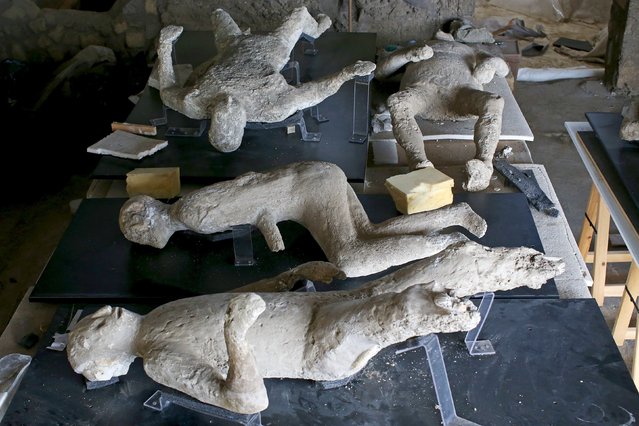
Plaster cast moulds of victims of the Mount Vesuvius eruption lie on a display table in a laboratory at Pompeii October 13, 2015. An expert team made up of archaeologists, radiologists, orthodontists and anthropologists began on September 2015 to use CAT scan technology (computerised axial tomography) to peer inside the plaster cast moulds of Pompeii's victims, in a study that has added more detail to previous findings. A 16-layer scan had to be used in order to penetrate the hardened plaster but the results showed up impressive skeletal remains and near perfect teeth. (Photo by Alessandro Bianchi/Reuters)
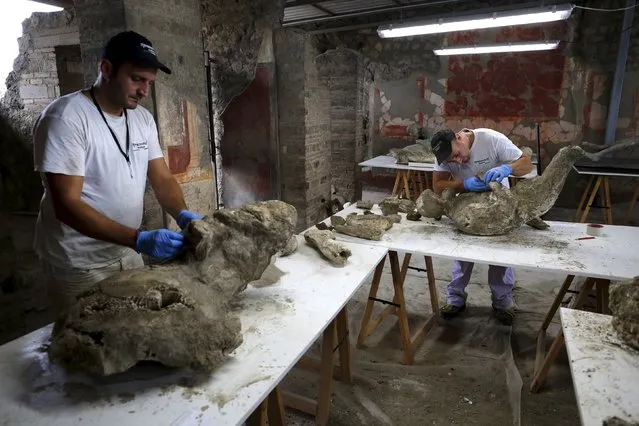
Restorers work to piece together fragments of bodies that have come away from plaster cast moulds of the victims of the Mount Vesuvius eruption in A.D. 79, which buried Pompeii, October 13, 2015. (Photo by Alessandro Bianchi/Reuters)
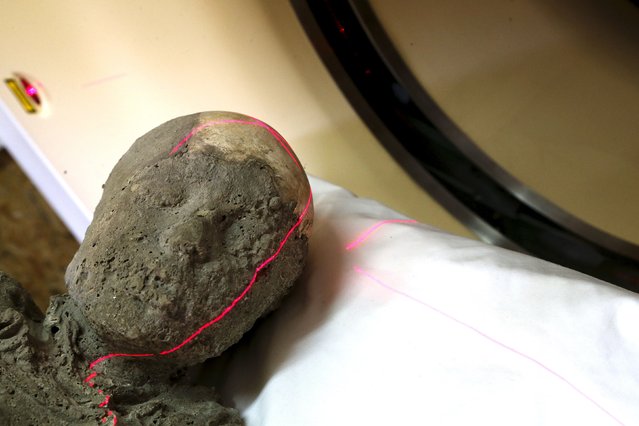
A plaster cast mould of a boy from an ancient Roman city is studied through a CAT (Computerised Axial Tomography) scan in Pompeii, September 29, 2015. (Photo by Ciro De Luca/Reuters)
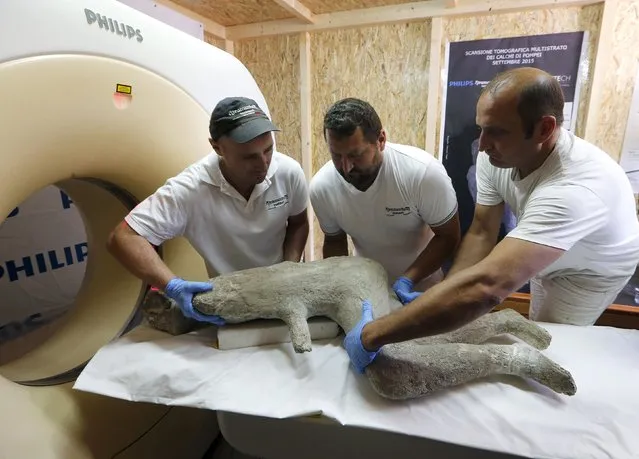
Researchers prepare the plaster cast mould of a Roman boy from an ancient Roman city as they put the body through a CAT (Computerised Axial Tomography) scan in Pompeii, September 29, 2015. (Photo by Ciro De Luca/Reuters)
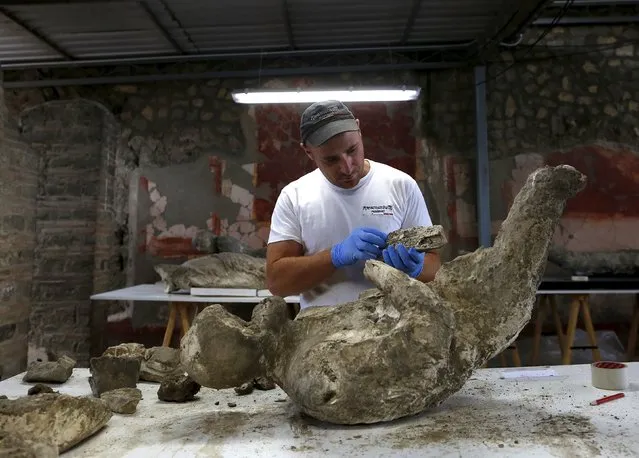
A restorer works to piece together fragments of bodies that have come away from plaster cast moulds of the victims of the Mount Vesuvius eruption in A.D. 79, which buried Pompeiii, October 13, 2015. (Photo by Alessandro Bianchi/Reuters)
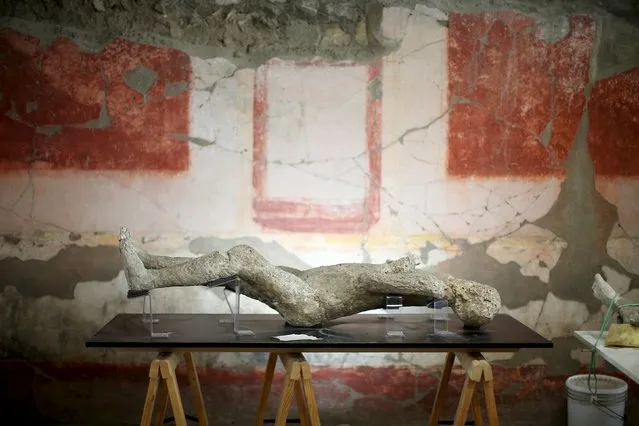
A plaster cast of a Pompeii victim lies in a frescoed room in the ancient Roman city, Pompeii, October 13, 2015. (Photo by Alessandro Bianchi/Reuters)
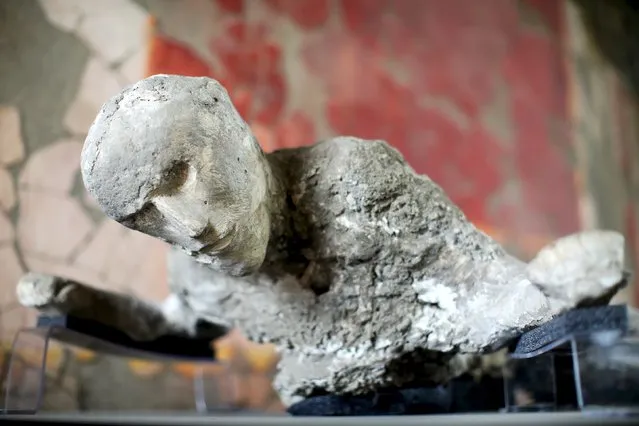
The plaster cast of a Pompeii victim lies in a frescoed room in the ancient Roman city, Pompeii, October 13, 2015. (Photo by Alessandro Bianchi/Reuters)
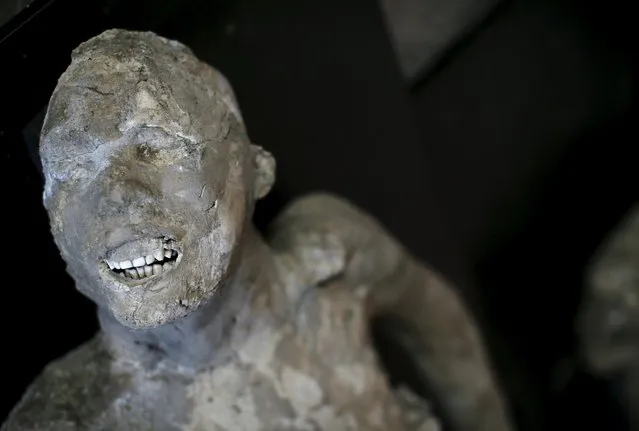
The[ plaster cast of a Pompeii victim lies in a frescoed room in the ancient Roman city, Pompeii, October 13, 2015. (Photo by Alessandro Bianchi/Reuters)
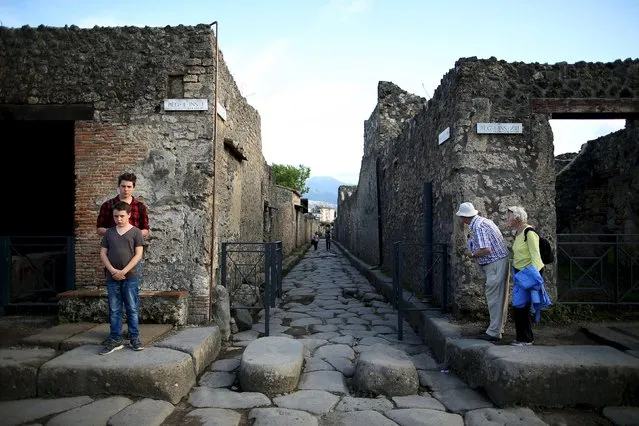
Tourists look down an ancient Roman cobbled street at the UNESCO World Heritage site of Pompeii, October 13, 2015. (Photo by Alessandro Bianchi/Reuters)
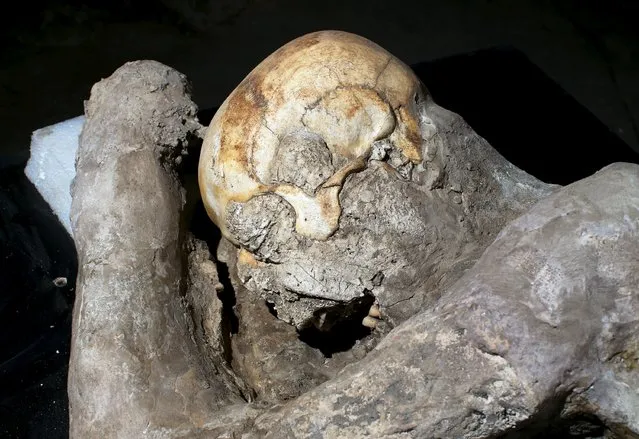
The plaster cast of a Pompeii victim lies in a frescoed room in the ancient Roman city, Pompeii, October 13, 2015. (Photo by Alessandro Bianchi/Reuters)
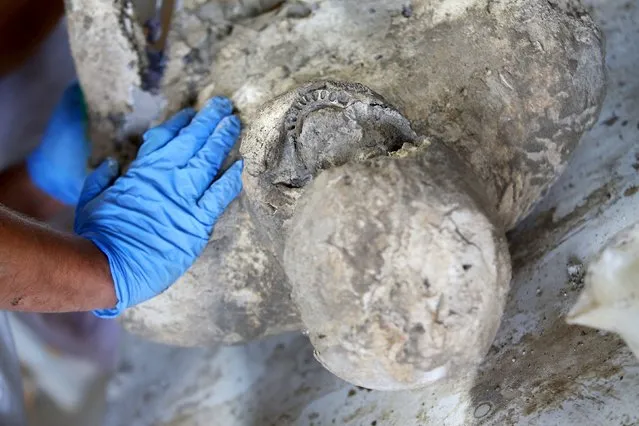
A restorer works to piece together fragments of bodies that have come away from plaster cast moulds of the victims of the Mount Vesuvius eruption in A.D. 79, which buried Pompeiii, October 13, 2015. (Photo by Alessandro Bianchi/Reuters)
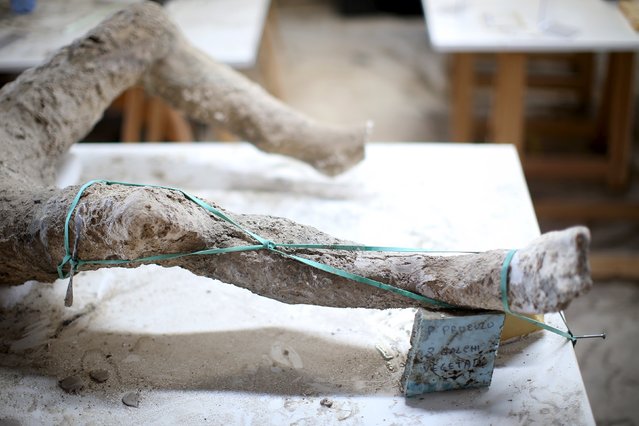
Elastic holds pieces of bone and plaster together after restoration work in the ancient Roman city, Pompeii, October 13, 2015. (Photo by Alessandro Bianchi/Reuters)
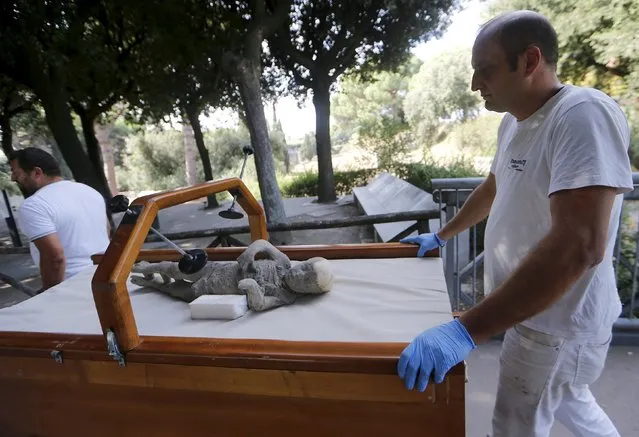
Researchers carry the plaster cast mould of a Roman boy from an ancient Roman city as they prepare to run his body through a CAT (Computerised Axial Tomography) scan in Pompeii, September 29, 2015. (Photo by Ciro De Luca/Reuters)
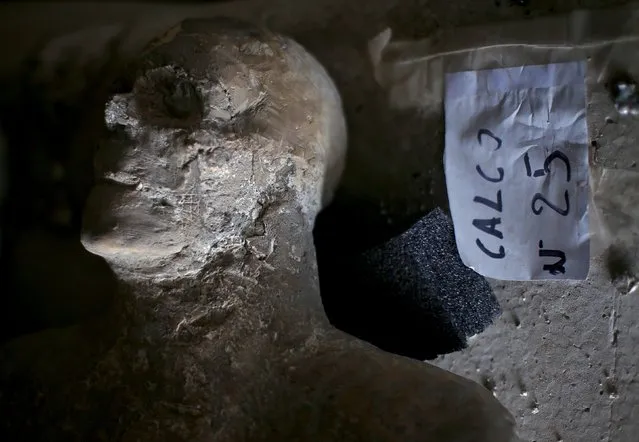
The plaster cast of a Pompeii victim is catalogued in a frescoed room in the ancient Roman city, Pompeii, October 13, 2015. (Photo by Alessandro Bianchi/Reuters)
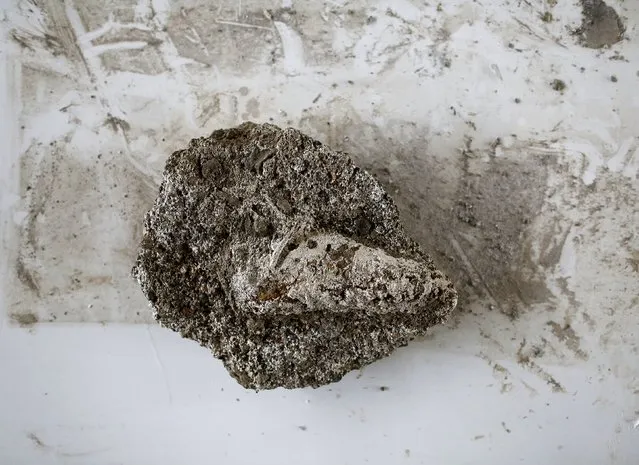
A shoe-clad foot is seen sticking out of a plaster cast mould of a Pompeii victim, at the laboratory in the ancient Roman city, Pompeii, October 13, 2015. (Photo by Alessandro Bianchi/Reuters)
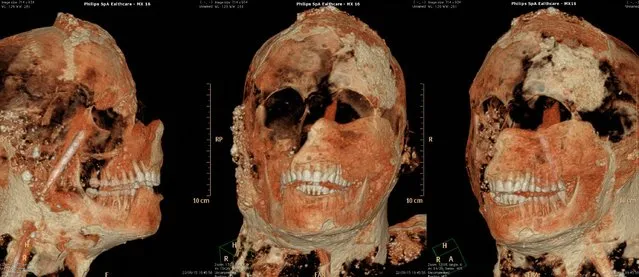
A combination photograph shows a CAT (Computerised Axial Tomography) scan of the head of a resident from an ancient Roman city in Pompeii in this September 22, 2015 handout. (Photo by Ercolano e Stabia/Reuters/Press Office of Soprintendenza Speciale per Pompei)
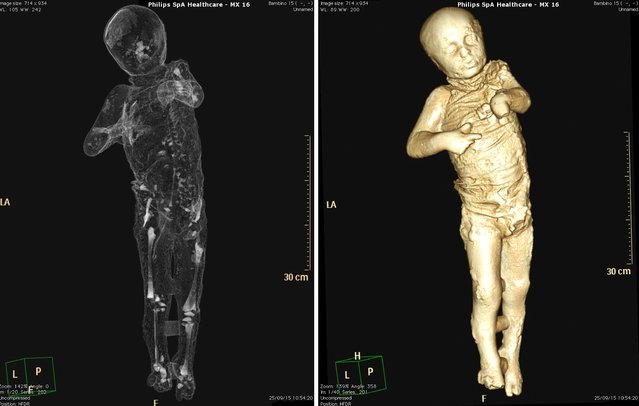
A combination photograph shows a CAT (Computerised Axial Tomography) scan of an ancient Roman boy believed to be four years old and his skeletal make-up in Pompeii in this September 25, 2015 handout. (Photo by Ercolano e Stabia/Reuters/Press Office of Soprintendenza Speciale per Pompei)
22 Oct 2015 08:02:00,
post received
0 comments
